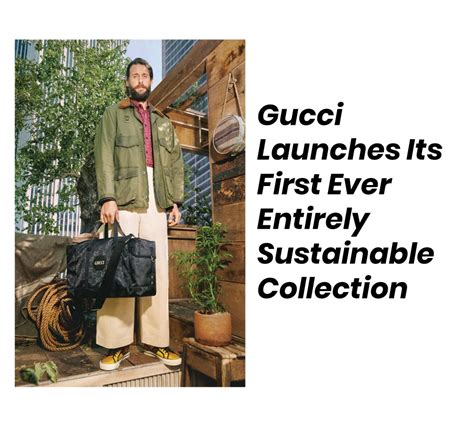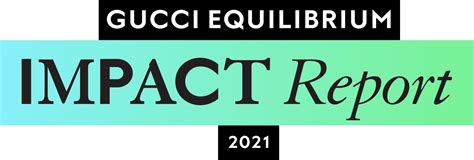basi information of environment analysis of gucci | gucci embedding circularity basi information of environment analysis of gucci We measure and monitor the global environmental impacts associated with our direct operations every year, focusing on energy, water, paper consumption and waste production. RV/left ventricular (LV) ratio on CTPA is a clinical endpoint in clinical trials involving catheter-directed treatments in patients with intermediate-risk pulmonary embolism ( 7 – 11 ). Identifying RV strain on CTPA facilitates treatment decisions.
0 · sustainability at gucci
1 · gucci sustainable processes
2 · gucci impact report
3 · gucci equilibrium report
4 · gucci embedding circularity
5 · gucci changemakers sustainability
6 · gucci agriculture
7 · equilibrium gucci
Create custom sweatpants & custom joggers in just a few clicks! Design screen printed, printed & embroidered sweatpants for men & women - no minimums! Your Logo, Top Brands, Amazing Value
A PESTEL analysis is a strategic management framework used to examine the external macro-environmental factors that can impact an organization or industry. In this article, we will do a .

We measure and monitor the global environmental impacts associated with our direct operations every year, focusing on energy, water, paper consumption and waste production.SUSTAINABILITY AT GUCCI EMBEDDING CIRCULARITY HIGHLIGHTS: • Ramping up recycled and regenerated materials • Gucci Off the Grid first collection in Gucci Circular Lines • Gucci .
2020 EP&L analysis showed a -44% reduction of Gucci’s total environmental footprint and a -47% decrease in its greenhouse gas emissions in its direct operations and .
At Gucci, we measure and monitor the environmental footprint associated with our direct operations around the world on an annual basis. Thanks to strategically implementing . Gucci’s 2019 Environmental Profit and Loss analysis shows that we are on track to attain our 2025 sustainability targets, including cutting greenhouse gas emissions by 50 . Gucci PESTLE (or PESTEL) Analysis assesses the brand on its business tactics across various parameters. PESTLE Analysis of Gucci examines the various external factors .
Today, we’ll discuss the pestle analysis of Gucci and how various macro-environmental factors impact the world’s iconic fashion brand. If you want to learn about the internal factors that . This report covers environmental analysis, STP, and marketing mix for Gucci, a luxurious fashion brand. It includes SWOT analysis, segmentation, targeting, positioning, and .A PESTEL analysis is a strategic management framework used to examine the external macro-environmental factors that can impact an organization or industry. In this article, we will do a PESTEL Analysis of Gucci.
The Gucci PESTLE analysis examines the Political, Economic, Socio-Cultural, Technological, Legal and Environmental factors that impact the luxury brand.We measure and monitor the global environmental impacts associated with our direct operations every year, focusing on energy, water, paper consumption and waste production.SUSTAINABILITY AT GUCCI EMBEDDING CIRCULARITY HIGHLIGHTS: • Ramping up recycled and regenerated materials • Gucci Off the Grid first collection in Gucci Circular Lines • Gucci-Up programme equaling 27 tons of reusable leather scraps from 2018 and 2020 • Avoided 1 million new boxes for our accessories 2020 EP&L analysis showed a -44% reduction of Gucci’s total environmental footprint and a -47% decrease in its greenhouse gas emissions in its direct operations and across the supply chain since 2015, relative to growth. Carbon neutral in scopes 1,2 and 3 of the Greenhouse Gas Protocol since 2018.
At Gucci, we measure and monitor the environmental footprint associated with our direct operations around the world on an annual basis. Thanks to strategically implementing programmes and good practices, we have increasingly improved our environmental performance. Gucci’s 2019 Environmental Profit and Loss analysis shows that we are on track to attain our 2025 sustainability targets, including cutting greenhouse gas emissions by 50 percent. Since 2015, Gucci has achieved a 37 per cent reduction of its footprint across the supply chain, relative to growth.
sustainability at gucci
Gucci PESTLE (or PESTEL) Analysis assesses the brand on its business tactics across various parameters. PESTLE Analysis of Gucci examines the various external factors like political, economic, social, technological (PEST) which impacts its business along with legal & environmental factors.Today, we’ll discuss the pestle analysis of Gucci and how various macro-environmental factors impact the world’s iconic fashion brand. If you want to learn about the internal factors that impact its growth and profitability, check out swot analysis of Gucci . This report covers environmental analysis, STP, and marketing mix for Gucci, a luxurious fashion brand. It includes SWOT analysis, segmentation, targeting, positioning, and product, price, place, and promotion strategies.A PESTEL analysis is a strategic management framework used to examine the external macro-environmental factors that can impact an organization or industry. In this article, we will do a PESTEL Analysis of Gucci.
mary tudor henry viii sister
The Gucci PESTLE analysis examines the Political, Economic, Socio-Cultural, Technological, Legal and Environmental factors that impact the luxury brand.We measure and monitor the global environmental impacts associated with our direct operations every year, focusing on energy, water, paper consumption and waste production.
SUSTAINABILITY AT GUCCI EMBEDDING CIRCULARITY HIGHLIGHTS: • Ramping up recycled and regenerated materials • Gucci Off the Grid first collection in Gucci Circular Lines • Gucci-Up programme equaling 27 tons of reusable leather scraps from 2018 and 2020 • Avoided 1 million new boxes for our accessories
manuale telecomando tudor
gucci sustainable processes
2020 EP&L analysis showed a -44% reduction of Gucci’s total environmental footprint and a -47% decrease in its greenhouse gas emissions in its direct operations and across the supply chain since 2015, relative to growth. Carbon neutral in scopes 1,2 and 3 of the Greenhouse Gas Protocol since 2018. At Gucci, we measure and monitor the environmental footprint associated with our direct operations around the world on an annual basis. Thanks to strategically implementing programmes and good practices, we have increasingly improved our environmental performance. Gucci’s 2019 Environmental Profit and Loss analysis shows that we are on track to attain our 2025 sustainability targets, including cutting greenhouse gas emissions by 50 percent. Since 2015, Gucci has achieved a 37 per cent reduction of its footprint across the supply chain, relative to growth.

Gucci PESTLE (or PESTEL) Analysis assesses the brand on its business tactics across various parameters. PESTLE Analysis of Gucci examines the various external factors like political, economic, social, technological (PEST) which impacts its business along with legal & environmental factors.
Today, we’ll discuss the pestle analysis of Gucci and how various macro-environmental factors impact the world’s iconic fashion brand. If you want to learn about the internal factors that impact its growth and profitability, check out swot analysis of Gucci .
gucci impact report

Louis Vuitton’s range of phone cases, bumpers and folios for women combine function with fashion. These stylish iPhone accessories are offered in a variety of sizes and signature materials, including models that recall the House’s trunk-making legacy.
basi information of environment analysis of gucci|gucci embedding circularity


























